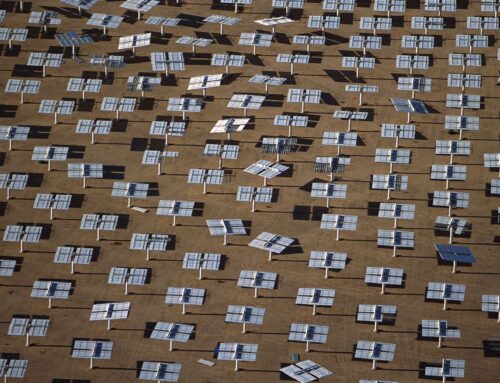Replace Comanche coal with renewable ‘energy park’, not unproven nuclear
April 2, 2025
Pueblo made headlines in 2022 when EVRAZ built a massive solar array to power its Rocky Mountain Steel plant, creating the world’s first solar-powered steel mill, ending 140 years of burning coal.
Now Pueblo can once again lead the world by deploying innovative solutions to replace the Comanche 3 coal plant, scheduled to retire in 2031. Doing so would generate tens of millions in property taxes, cut energy bills and create a new regional economic engine.
But the innovative solution suggested by Energy Innovation, the think-tank where we work, is markedly different from last year’s proposal from community leaders that relies on unproven technologies including a small modular nuclear reactor (SMR).
Though new technology can seem alluring, that speculative and expensive combination could force Xcel customers to pay billions in investment costs, while never panning out.
Pueblo, the Colorado Public Utilities Commission (PUC) and Xcel could propel our state and America into a clean-energy future by instead choosing today’s cheapest, fastest-to-build technologies.
This “energy park” combines solar and wind to generate clean electricity, along with batteries to store it on-site, with clean industries that match their energy usage to renewables generation. It would power local industries when needed or send electricity to the grid when supplies are low.
Stay up to speed: Sign up for daily opinion in your inbox Monday-Friday
Combining resources would keep the lights on more reliably than Comanche, which has suffered frequent unplanned outages. Batteries mean the energy park would provide cheap power, more reliably than Comanche’s output, even when the wind isn’t blowing or the sun isn’t shining.
Two nascent clean industrial technologies deployed across America could be integrated into the energy park with minimal risk to Colorado’s electricity bills. Thermal batteries store energy as heat to use in manufacturing, soaking up excess power and cutting air pollution from industrial facilities. Electrolyzers convert electricity to hydrogen to reduce pollution from airplanes or chemical production.
A renewable energy park is a win-win-win situation — the rarest energy policy outcome.
Pueblo would diversify its economy by keeping cheap energy in the community to power local industry instead of sending it to other parts of the state, generating property tax payments that peak at $40 million annually, and creating hundreds of permanent jobs in engineering, business operations and industrial plant operation.
The energy park could begin construction before 2030, years before an SMR, while being built step-by-step as new industrial customers add demand to reduce the risk of building a boondoggle.
Xcel customers across Colorado would save money since they’d pay less than half of project costs, or around $3 billion, with electricity sales to industrial customers paying a larger share of price tag. Compare that to the SMR’s estimated $11 billion price tag, with Xcel customers paying more than 60% of the cost, or $7 billion, and the energy park seems like a better deal. That’s important considering Coloradans pay far higher Xcel energy bills these days.
The high cost and technological infeasibility of the SMR proposal are also important considerations, putting tax revenue at serious risk. Zero SMR projects exist today and proposed projects have run significantly over budget — Utah’s NuScale project costs more than doubled from $4.2 billion in 2018 to $9.3 billion when it was cancelled in 2023, forcing utility customers to cover utility losses.
Xcel and Colorado’s PUC deserve credit for retiring Comanche decades earlier than planned, and for thoughtfully engaging the community in a just transition to improve Pueblo’s economy and environment. And Pueblo’s community leaders deserve credit for bringing community concerns into the regulatory process.
But this isn’t time to choose technologies that have been “just a decade away” for decades, aren’t actually clean, or force Xcel’s customers to foot the bill for cost overruns. The PUC will hold a series of public comment hearings on this topic during the next month; this is an important moment to decide what comes next.
For five decades, the Comanche coal plant has spewed thousands of tons of sulfur dioxide and nitrogen oxides into Pueblo’s air, causing illnesses and early deaths, and emitted millions of tons of heat-trapping greenhouse gasses while shipping electricity to other parts of Colorado. Replacing it is an opportunity to keep more energy in Pueblo to power new economic activity as much as it is a chance to cut pollution.
A renewable energy park would do all the above. Xcel and the Colorado PUC should consider this alternative as an economic strategy that creates an affordable, reliable, and clean power grid.
Silvio Marcacci, of Denver, is the senior communications director at nonpartisan think tank Energy Innovation and board advisor at The International Council on Clean Transportation. Michelle Solomon, of Gunnison, is a manager in the electricity program at nonpartisan think tank Energy Innovation.
Search
RECENT PRESS RELEASES
Related Post



